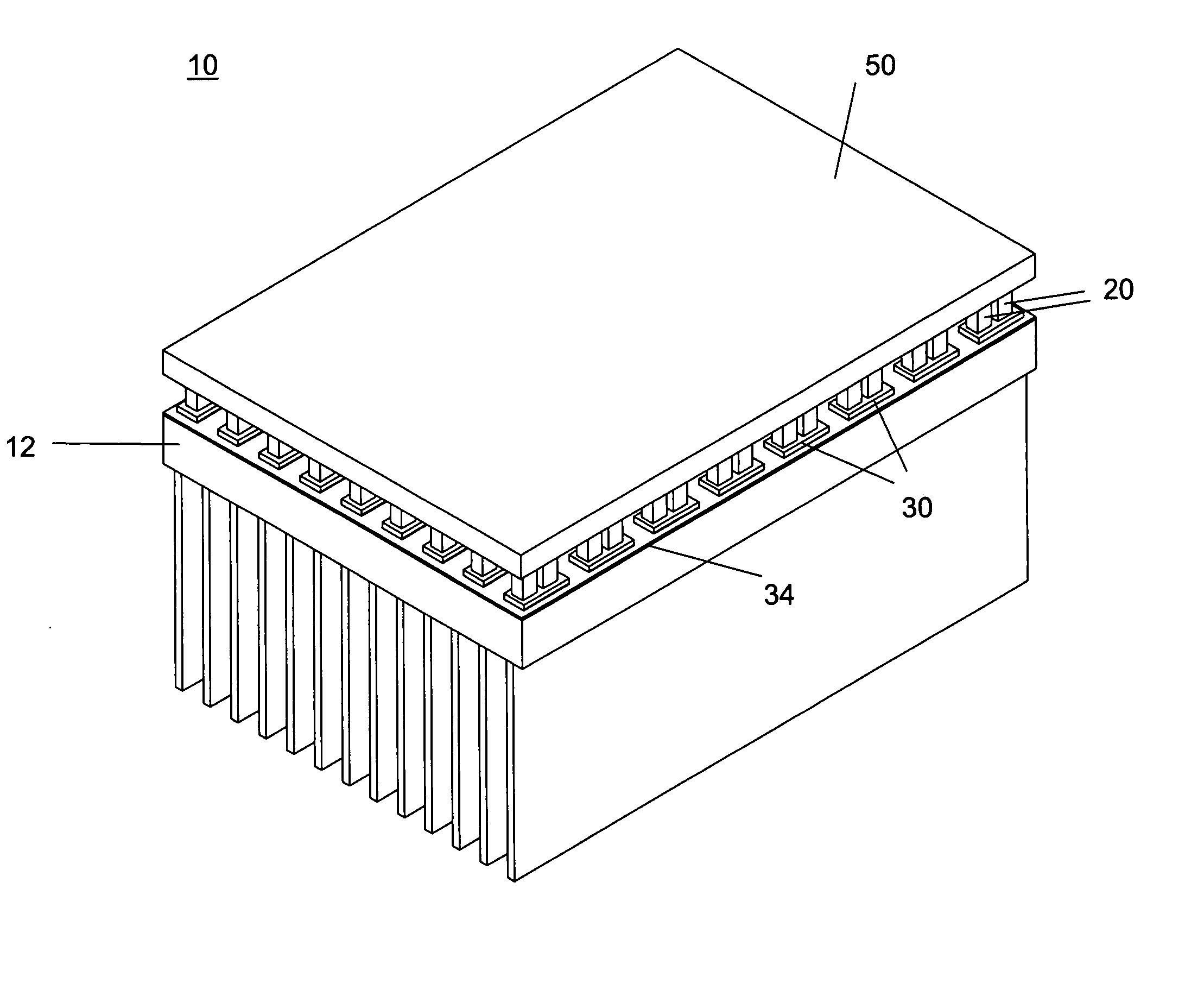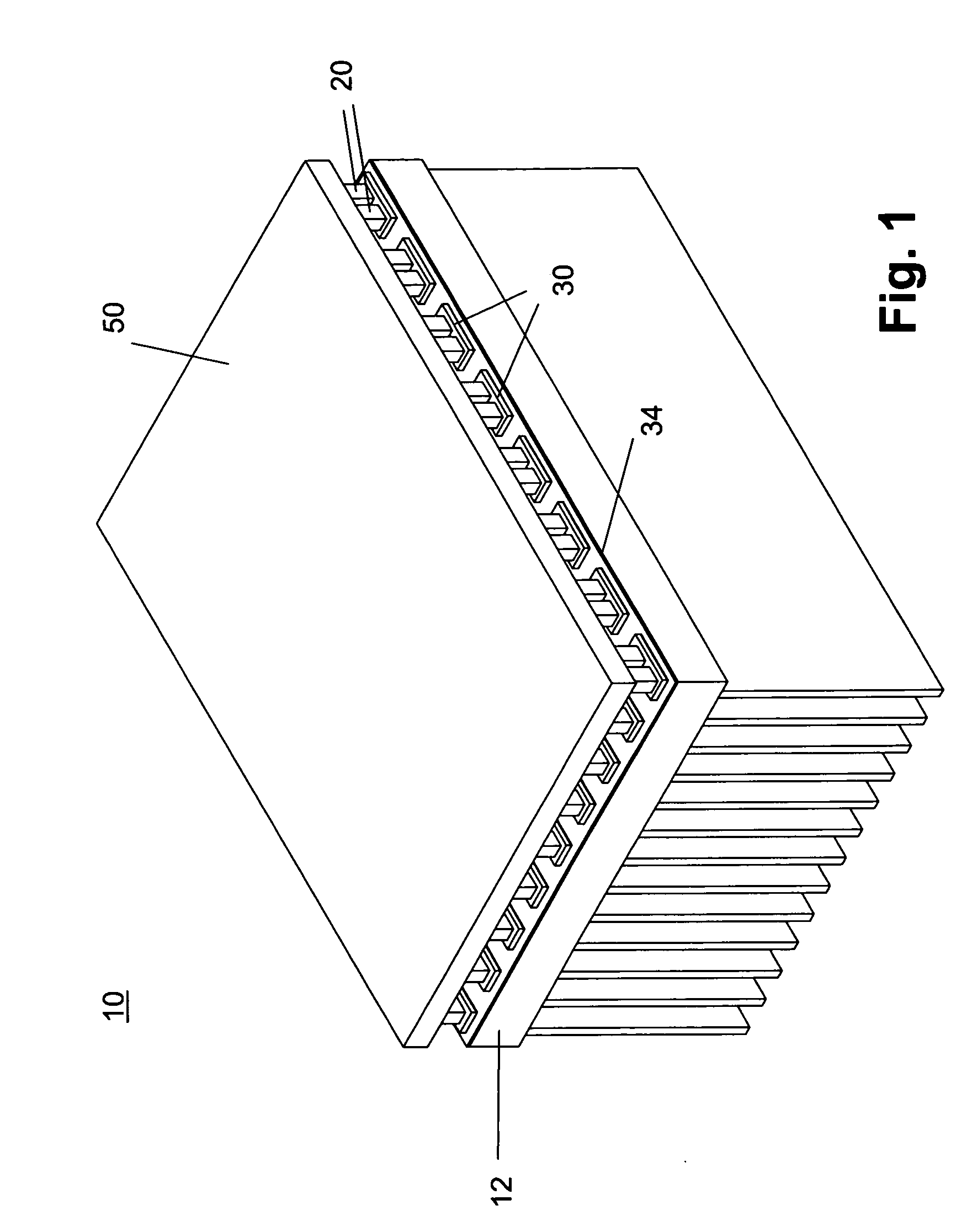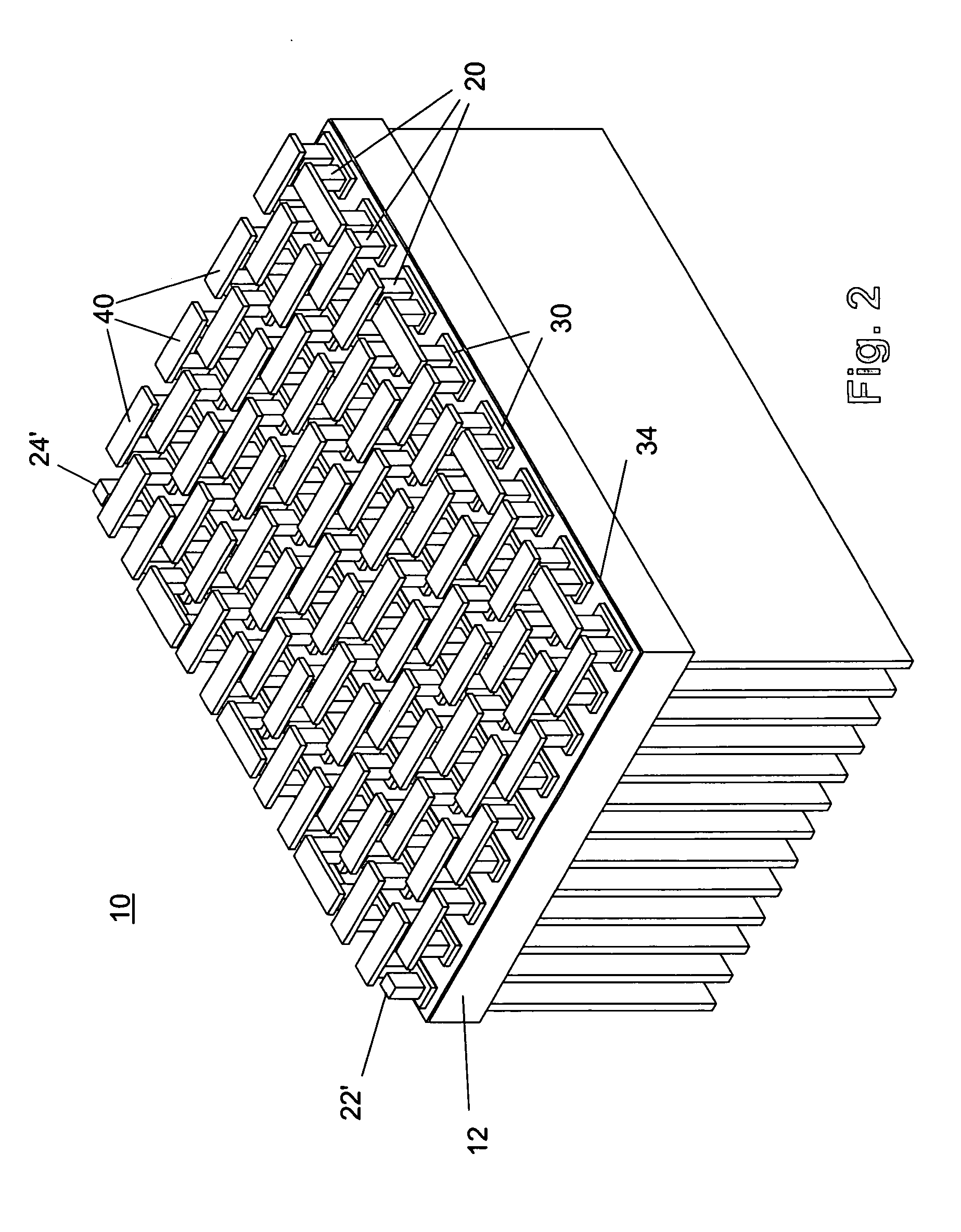Thermoelectric module with directly bonded heat exchanger
a heat exchanger and thermal module technology, applied in the direction of thermoelectric devices with peltier/seeback effect, basic electric elements, electric apparatus, etc., can solve the problems of limited efficiency of conventional construction, brittleness of wafers and thermal stresses at the junction of the substrate and the thermoelectric material chips, and stiffness of ceramics and thermal stresses at the junction of the substrate and the thermoelectric semiconductors. , to achieve the effect of reducing the thermal resistance of the conventional substrate, improving thermal efficiency
- Summary
- Abstract
- Description
- Claims
- Application Information
AI Technical Summary
Benefits of technology
Problems solved by technology
Method used
Image
Examples
Embodiment Construction
[0031] The preferred embodiment of the present invention is illustrated in FIGS. 1-8. FIG. 1 shows a thermoelectric module 10 of the present invention. Module 10 includes an object to be heated or cooled 12, a plurality of thermoelectric elements 20, a plurality of electrically conductive lower pads 30, a plurality of electrically conductive upper pads 40 (not shown), and a reinforcing substrate 50. Each of the plurality of electrically conductive lower pads 30 is directly bonded to a surface 14 of object 12 with a thermally conductive bonding material 34 that is covering at least the surface area of object 12 beneath the plurality of lower pads 30 defined by the perimeter pads of module 10. It is important to note that the thermoelectric module 10 of the present invention does not have a substrate between the object to be heated or cooled 12 and the electrically conductive pads 30 that would provide structural reinforcement to thermoelectric module 10 as provided in the prior art. ...
PUM
 Login to View More
Login to View More Abstract
Description
Claims
Application Information
 Login to View More
Login to View More - R&D
- Intellectual Property
- Life Sciences
- Materials
- Tech Scout
- Unparalleled Data Quality
- Higher Quality Content
- 60% Fewer Hallucinations
Browse by: Latest US Patents, China's latest patents, Technical Efficacy Thesaurus, Application Domain, Technology Topic, Popular Technical Reports.
© 2025 PatSnap. All rights reserved.Legal|Privacy policy|Modern Slavery Act Transparency Statement|Sitemap|About US| Contact US: help@patsnap.com



